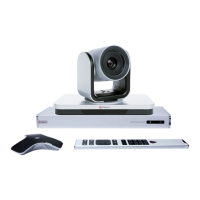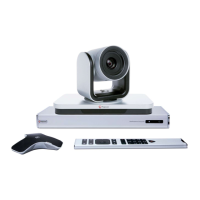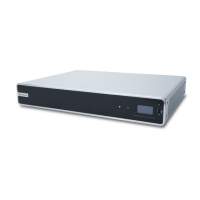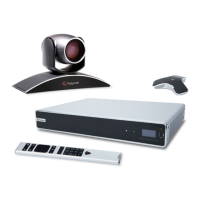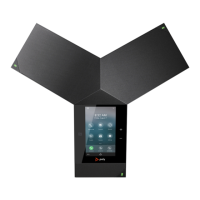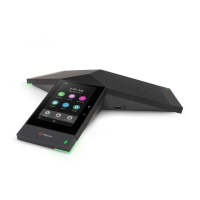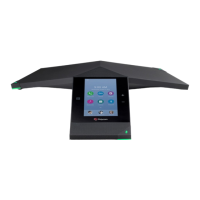Administrator’s Guide for the Polycom RealPresence Group Series Networks
Polycom, Inc. 50
SVC-Based Conferencing
In an SVC-based conference, each SVC-enabled endpoint transmits multiple bit streams, called
simulcasting, to the Polycom RealPresence Collaboration Server (RMX). The RealPresence Collaboration
Server sends or relays selected video streams to the endpoints without sending the entire video layout. The
streams are assembled into a layout by the SVC-enabled endpoints according to each of their different
display capabilities and layout configurations.
In a Microsoft Lync 2013-hosted multipoint or point-to-point call, you can view multiple far-end sites in
layouts. RealPresence Group 500 systems display up to five far-end sites on Lync 2013 hosted (SVC),
multipoint calls. RealPresence Group 700 systems display up to six far-end sites.
SVC-based conferencing provides several benefits, including fewer video resource requirements, better
error resiliency, lower latency, and more flexibility with display layouts.
Enabling and Disabling SVC Calls
You can make and receive SVC calls when the Polycom RealPresence Group system is connected to an
SVC-compatible bridge. Enable or disable SVC calls from the Dialing Preferences screen in the web
interface.
For information on enabling encryption for SVC calls, refer to Configuring Encryption Settings for SVC Calls
on page 116.
For more information about the features and limitations of SVC-based conferencing, refer to the Polycom
RealPresence SVC-Based Conferencing Solutions Deployment Guide available at support.polycom.com.
Preferred Speeds
To configure dialing speeds:
1 In the web interface, go to Admin Settings > Network > Dialing Preference > Preferred Speeds.
2 Configure these settings.
Setting Description
Preferred Speed for
Placed Calls
IP Calls
SIP (TIP) Calls
Determines the speeds to use for IP or SIP (TIP) calls from this system when either
of the following statements is true:
• The call speed is set to Auto on the Place a Call screen
• The call is placed from the directory
If the far-site system does not support the selected speed, the system automatically
negotiates a lower speed.
Users cannot specify a call speed when placing calls from the Polycom Touch
Control.
The SIP (TIP) Calls setting is available only when the TIP setting is enabled.
Maximum Speed for
Received Calls
IP Calls
SIP (TIP) Calls
Allows you to restrict the bandwidth used when receiving IP or SIP (TIP) calls.
If the far site attempts to call the system at a higher speed than selected here, the
call is renegotiated at the speed specified in this field.
The SIP (TIP) Calls setting is available only when the TIP setting is enabled.
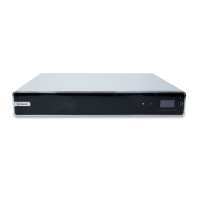
